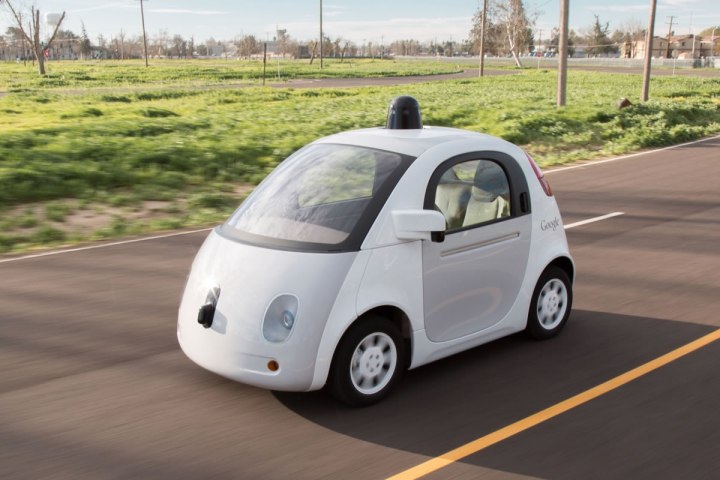
One such company is Google. The multinational tech firm has been granted a patent that details just some of the ways its Self-Driving Car Project could talk to pedestrians. According to the patent, these methods will not only make the vehicle’s intentions clear, they will also determine the correct way to respond to passersby.

The most obvious means of communication that Google’s autonomous cars will use are the ones that we use behind the wheel every day — turn signals, lights, horns, reverse beepers, etc. — only they’ll be controlled by a computer in a driverless car, with a bevy of sensors and cameras determining when they’re appropriate. Google’s other ideas include light-up “walk” or “don’t walk” signs on the car’s body, image displays, and audible signals similar to the ones used at busy crosswalks. Some of the proposals, however, are slightly more bizarre.
“Other types of notification devices may include mechanisms that mimic human behaviors, such as a robotic hand to make gestures or robotic eyes on the vehicle that allow the pedestrian to recognize that the vehicle ‘sees’ the pedestrian,” the patent reads.
A car with robotic eyes may sound like something out of science fiction, but Google’s autonomous aspirations are as real as you or I. One further sign of the firm’s serious intent is its recent hiring of Robert Rose, a former Tesla engineer who worked on the brand’s semi-autonomous Autopilot system. You can read more about the acquisition here.
Editors' Recommendations
- Volkswagen is launching its own self-driving car testing program in the U.S.
- How a big blue van from 1986 paved the way for self-driving cars
- Walk the Great Wall of China in Google’s latest virtual tour
- SpaceX reaches 100K Starlink customers. Here’s how to sign up
- Netflix launches largest reality casting call ever. Here’s how to apply


